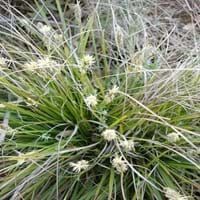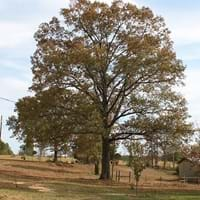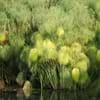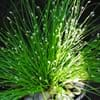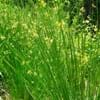Life Span
Perennial
Perennial
Origin
Japan
United States, Mid-Atlantic United States, Southeastern United States, Central United States, South-Central United States
Types
Narrow sedge
Not Available
Habitat
Boggy areas, ditches, marshes, riparian zones, stream banks, Tropical regions, Wet forest
Sandhills
USDA Hardiness Zone
6-9
6-9
Sunset Zone
3a, 3b, 4, 5, 6, 7, 8, 9, 14, 15, 16, 17, 18, 19, 20, 21, 22, 23, 24
Not Available
Habit
Arching/Fountain-shaped
Oval or Rounded
Flower Color
Brown
Red, Light Green
Flower Color Modifier
Bicolor
Bicolor
Fruit Color
Not Available
Brown, Black
Leaf Color in Spring
Dark Green, Light Yellow
Green, Gray Green
Leaf Color in Summer
Dark Green, Light Yellow
Gray Green, Dark Green
Leaf Color in Fall
Dark Green, Light Yellow
Gray Green, Dark Green, Tan, Dark Red
Leaf Color in Winter
Dark Green, Light Yellow
Not Available
Leaf Shape
Long Linear
Lobed
Plant Season
Spring, Summer, Fall, Winter
Spring, Summer, Fall
Sunlight
Partial Sun, Partial shade
Full Sun
Type of Soil
Clay, Loam, Sand
Clay, Loam, Sand
The pH of Soil
Acidic, Neutral, Alkaline
Acidic, Neutral
Soil Drainage
Well drained
Well drained
Tolerances
Drought, Heat Tolerance
Pollution
Where to Plant?
Container, Ground, Pot
Ground
How to Plant?
Seedlings
Seedlings, Stem Planting, Transplanting
Plant Maintenance
Low
Medium
Watering Requirements
Average Water Needs, Do Not over Water, Never Over-water, Prefer drip-irrigation instead of Over-head watering, Requires regular watering
Average Water Needs, Do Not over Water, Keep ground moist, Never Over-water, Requires watering in the growing season, Water less during winter
In Summer
Ample Water
Lots of watering
In Spring
Ample Water
Moderate
In Winter
Average Water
Average Water
Soil pH
Acidic, Neutral, Alkaline
Acidic, Neutral
Soil Type
Clay, Loam, Sand
Clay, Loam, Sand
Soil Drainage Capacity
Well drained
Well drained
Sun Exposure
Partial Sun, Partial shade
Full Sun
Pruning
Remove damaged leaves, Remove dead leaves
A hard prune may be necessary if the plant becomes woody, Remove damaged leaves, Remove dead branches, Remove dead leaves
Fertilizers
organic fertlizers, very little fertilizers at a time, Water soluble fertilizers
fertilize in growing season
Pests and Diseases
Aphids, Mealybugs, Red blotch, Scale, Slugs
Leaf Blister, Spider mites
Plant Tolerance
Dry Conditions, Heat Tolerance
Drought, Salt
Flowers
Insignificant
Insignificant
Flower Petal Number
Single
Not Available
Foliage Texture
Fine
Coarse
Foliage Sheen
Glossy
Glossy
Attracts
Insects, Mealybugs
Birds
Allergy
Asthma
no allergic reactions
Aesthetic Uses
Beautification, Borders, Cottage Garden, Landscape Designing, Showy Purposes
Landscape Designing
Beauty Benefits
No Beauty Benefits
Not Available
Environmental Uses
Air purification, Food for insects, Shelter for wildlife, Versatility, Wildlife
Air purification
Medicinal Uses
Diuretic
Nutrients
Part of Plant Used
Leaves
Bark, Seeds, Stem, Tree trunks
Other Uses
Decoration Purposes, Showy Purposes, Used as Ornamental plant
Economic Purpose, Used in construction
Used As Indoor Plant
Yes
No
Used As Outdoor Plant
Yes
Yes
Garden Design
Container, Edging, Foundation, Groundcover, Mixed Border
Feature Plant, Shade Trees
Botanical Name
CAREX oshimensis 'Supergold'
QUERCUS falcata
Common Name
Sedge
Southern Red Oak
In Hindi
evergold Sedge
दक्षिणी लाल ओक
In German
Evergold Segge
Südliche Red Oak
In French
Evergold carex
Chêne rouge du Sud
In Spanish
Evergold juncia
Roble Rojo meridional
In Greek
evergold σπαθόχορτο
Νότια Red Oak
In Portuguese
Evergold Sedge
Southern Red Oak
In Polish
Evergold turzyca
Southern Red Oak
In Latin
evergold Sedge
Quercus falcata
Phylum
Tracheophyta
Magnoliophyta
Class
Liliopsida
Magnoliopsida
Family
Cyperaceae
Fagaceae
Clade
Angiosperms, Commelinids, Monocots
Angiosperms, Eudicots, Rosids
Tribe
Cariceae
Not Available
Subfamily
Cyperoideae
Not Available
Number of Species
Not Available
Importance of Evergold Sedge and Southern Red Oak
Want to have the most appropriate plant for your garden? You might want to know the importance of Evergold Sedge and Southern Red Oak. Basically, these two plants vary in many aspects. Compare Evergold Sedge and Southern Red Oak as they differ in many characteristics such as their life, care, benefits, facts, etc. Every gardener must at least have the slightest clue about the plants he wants to plant in his garden. Compare their benefits, which differ in many ways like facts and uses. The medicinal use of Evergold Sedge is Diuretic whereas of Southern Red Oak is Nutrients. Evergold Sedge has beauty benefits as follows: No Beauty Benefits while Southern Red Oak has beauty benefits as follows: No Beauty Benefits.
Compare Facts of Evergold Sedge vs Southern Red Oak
How to choose the best garden plant for your garden depending upon its facts? Here garden plant comparison will help you to solve this query. Compare the facts of Evergold Sedge vs Southern Red Oak and know which one to choose. As garden plants have benefits and other uses, allergy is also a major drawback of plants for some people. Allergic reactions of Evergold Sedge are Asthma whereas of Southern Red Oak have no allergic reactions respectively. Having a fruit bearing plant in your garden can be a plus point of your garden. Evergold Sedge has no showy fruits and Southern Red Oak has showy fruits. Also Evergold Sedge is not flowering and Southern Red Oak is not flowering . You can compare Evergold Sedge and Southern Red Oak facts and facts of other plants too.
